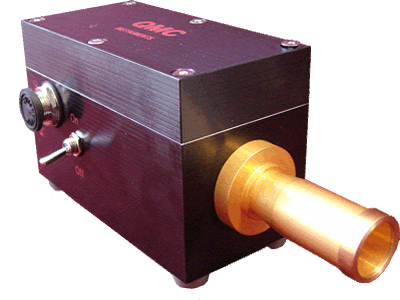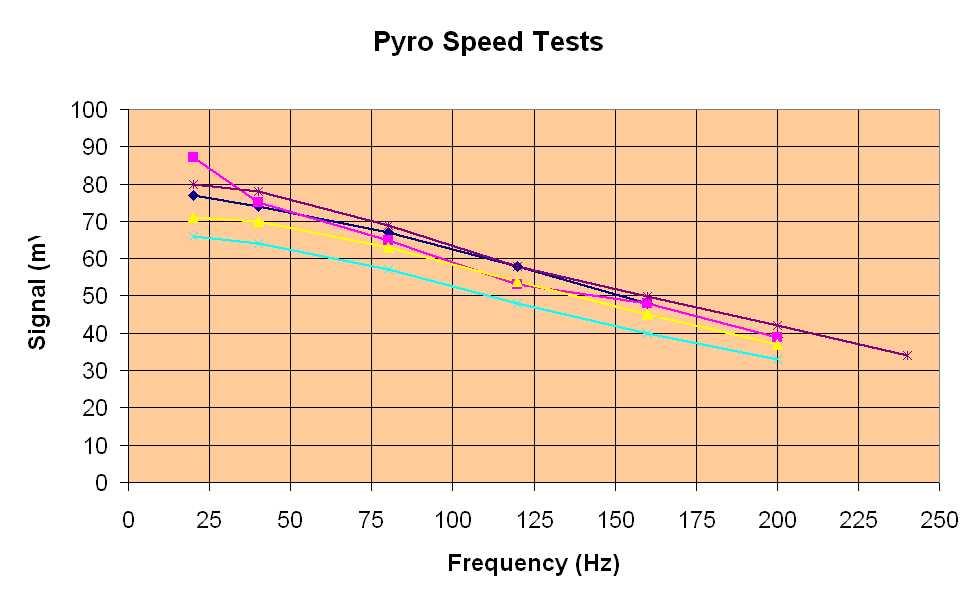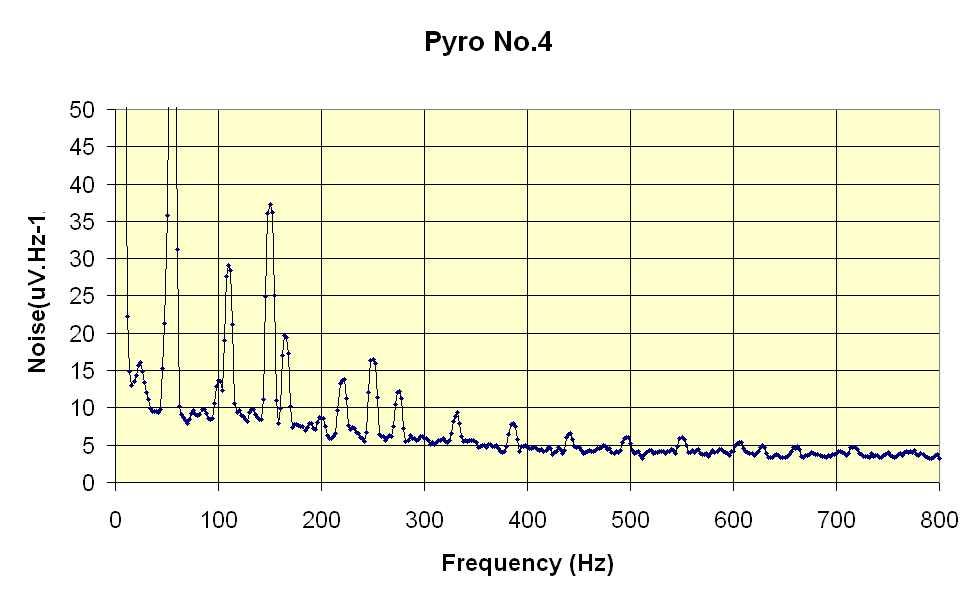Terahertz pyroelectric detectors
QMC Instruments Ltd. has a new line of room temperature pyroelectric Terahertz detectors. The first of these detectors was supplied in August 2009 with the two spectrometers delivered to the Purple Mountain Observatory.

Preliminary performance specification, pending further testing

Measurement of the pyroelectric detector signal as a function of frequency

Typical pyroelectric detector noise spectrum measured at the output of the amplifier
Pyroelectric detector features
- Room temperature operation
- Integrated amplifier
- 5V to 9V (battery or external) power supply
- 50 ohm bnc output
- Winston optical cone coupling to the detector. For example f/3 optics with 15mm diameter entrance aperture
- 20THz low-pass mesh filter mounted on the cone entrance aperture as standard. Other LP filter (reduced bandwidth) options available at 0.3THz, 1THz, 3THz and 10THz
- Optical performance:
| Modulation frequency (Hz) | 10 | 20 | 40 | 80 | 160 | 320 |
| Calculated Sopt at Amp. Output (VW-1) | 18 300 | 18 200 | 18 200 | 16 000 | 11 600 | 5600 |
| Amplifier Voltage Gain | 20 | 40 | 80 | 140 | 200 | 200 |
| Noise (uV Hz-1/2) | 8 | 8.5 | 9 | 9.5 | 9 | 7 |
| Calculated NEPopt (nW Hz-1/2) | 0.44 | 0.47 | 0.50 | 0.60 | 0.78 | 1.25 |
Figures assume 50% in-band atmospheric attenuation
Edited Nov09